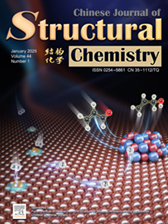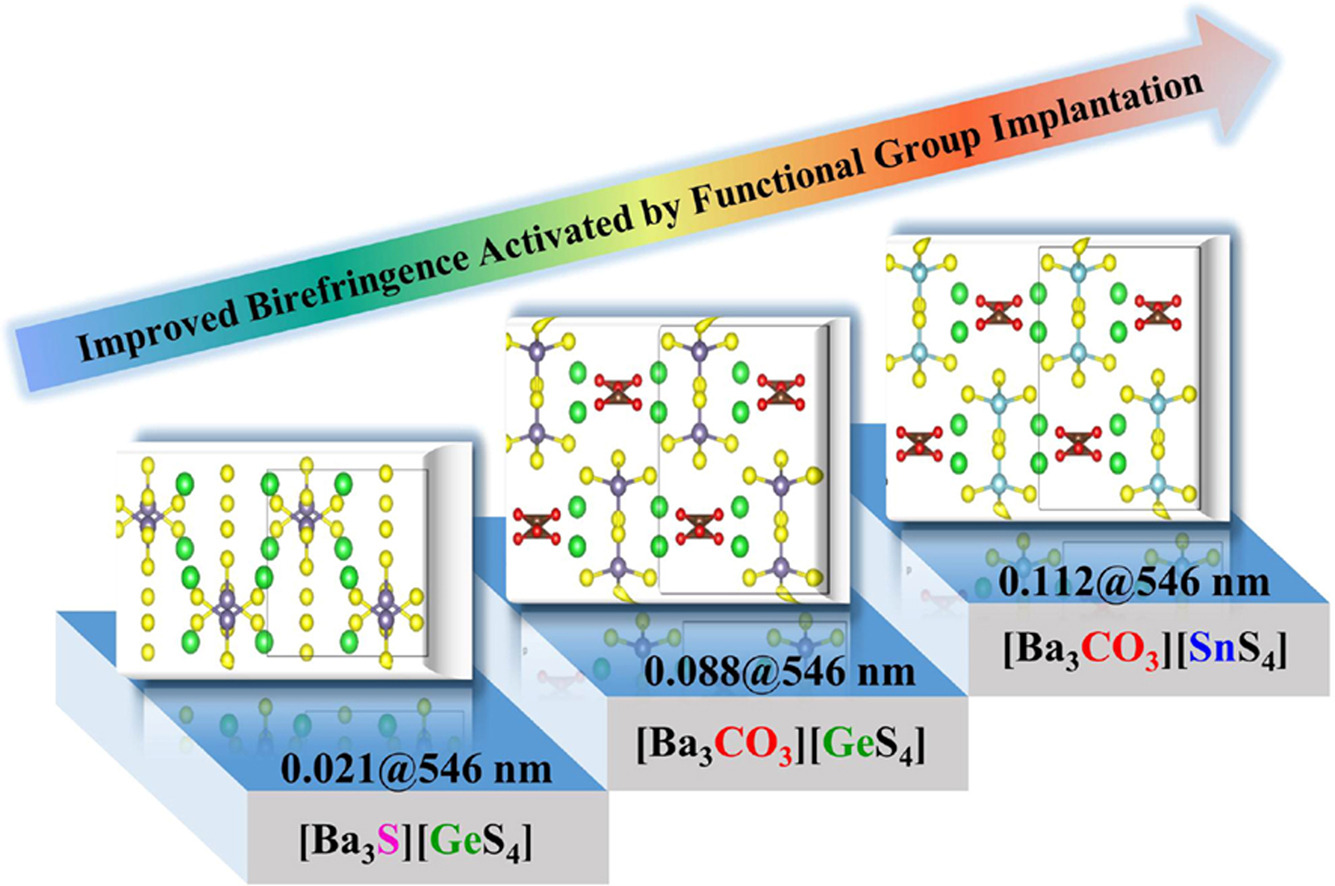
Cover Picture
Hydrogen spillover enhances the selective hydrogenation of α,β-unsaturated aldehydes on the Cu–O–Ce interface
Jinyuan Cui, Tingting Yang, Teng Xu, Jin Lin, Kunlong Liu*, Pengxin Liu* Submit a Manuscript
Hydrogen spillover enhances the selective hydrogenation of α,β-unsaturated aldehydes on the Cu–O–Ce interface
Jinyuan Cui, Tingting Yang, Teng Xu, Jin Lin, Kunlong Liu*, Pengxin Liu* Submit a Manuscript
From [Ba3S][GeS₄] to [Ba₃CO₃][MS₄] (M = Ge, Sn): Enhancing optical anisotropy in IR birefringent crystals via functional group implantation
Yong-Fang Shi, Sheng-Hua Zhou, Zuju Ma, Xin-Tao Wu, Hua Lin*, Qi-Long Zhu*
Chin. J. Struct. Chem., 2025, 44(1), 100455. DOI: 10.1016/j.cjsc.2024.100455
January 1, 2025
Birefringent crystal; Functional group implantation; Optical anisotropy; π-Conjugated group; Oxychalcogenide
ABSTRACT
Birefringent crystals are crucial for manipulating light's phase and polarization, making them vital components in various optical devices. Traditionally, strategies for designing high-performance birefringent crystals have focused on modifying the parent structure. However, there are limited examples demonstrating how changing functional groups can effectively enhance birefringence (Δn), as such changes often significantly alter the crystal structure. In this study, we propose a "functional group implantation" strategy aimed at significantly improving birefringent performance within the chalcogenide system. This involves replacing the isotropic [S]2⁻ ions with anisotropic π-conjugated [CO₃]2⁻ groups. We validated this approach through comprehensive comparisons between the chalcogenide [Ba₃S][GeS₄] and the oxychalcogenide [Ba₃CO₃][MS₄] (where M = Ge and Sn), both of which adopt the same space group and feature the same arrangements of functional groups. Experimental characterization and theoretical calculations confirm that the [CO₃]2⁻ groups exhibit significantly greater polarization anisotropy than the [S]2⁻ groups. This difference leads to a marked increase in Δn in [Ba₃CO₃][MS₄] (ranging from 0.088 to 0.112 at 546 nm) compared to [Ba₃S][GeS₄] (0.021 at 546 nm). This finding not only broadens the structural chemistry of π-conjugated chalcogenides but also illustrates the potential of functional group implantation for designing infrared birefringent crystals with enhanced optical anisotropy.







